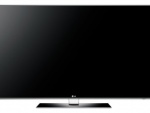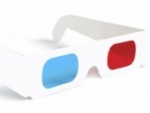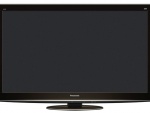Most new TVs have the capability to display 3D. The most common source for 3D content is specific 3D Blu-rays, but certain games and a handful of cable/satellite channels also have 3D content. These TVs, generally, also have the ability to convert 2D ...
The past several years has seen the rise of 3D, both in the movie theaters and at home. More and more TVs are capable of 3D, causing many to ask: Do I really need this? Iâve gotten other, similar, questions, like âIs everything 3D on a 3D TV?â and âCan I get a TV without 3D?â
Well⦠yes and no.
What It Is
Most new TVs have the capability to display 3D. The most common source for 3D content is specific 3D Blu-rays, but certain games and a handful of cable/satellite channels also have 3D content. These TVs, generally, also have the ability to convert 2D content into 3D, but this isnât nearly as good as ârealâ 3D content.
The fact isâ¦
3D at this point is just a feature. You can use it, never use it, use it once and forget about it, whatever you want. Unless you enable the 3D mode, the TV will work just like any regular 2D television. Because itâs so prevalent, there is not much of a premium added to make the TV 3D compatible.
In fact, in the drive to get LCDs and Plasmas capable of displaying 3D (and well, at that), the TVs themselves became better. Not just with 3D, but with 2D as well. It may seem odd, but making the TVs 3D compatible made them look better with 2D.
So by extension, the best looking TVs on the market are capable of displaying 3D, but if you never use that feature, theyâll look better with 2D than their 2D-only cousins (generally).
Two Types
There are two types of 3D TVs: Active and Passive. Active is a little more common, and use battery-powered âactive shutterâ glasses. These glasses are like little LCD screens, and in sync with the TV, they darken at specific times so that each eye only gets its specific information (separate images for each eye is how all 3D works). The advantage with active shutter glasses is you get full 1,920×1,080 resolution per eye. The disadvantages are that some people see the flicker of the glasses. Also, the glasses themselves can be expensive and some are cumbersome. Most companyâs glasses (especially Samsung, but Sony Sony and Panasonic Panasonic too), have 3D glasses that are fairly light. Theyâre not as comfortable as passive thoughâ¦
Passive 3D TVs, mostly those from LG, Vizio, and Toshiba Toshiba, use lightweight polarized glasses, similar to what youâd get from most movie theaters. The advantages, besides the more comfortable glasses, are no flicker (like what you can get from active shutter), and less light lost through the glasses (though not a huge deal, as most modern TVs are plenty bright). The main disadvantage is that youâre only getting half the resolution per eye: 1,920×540. If youâre sitting close enough (or the screen is big enough) you can see the line structure, and sometimes jagged edges on diagonal lines.
This is one of the ways that the new Ultra HD â4Kâ televisions are cool, in that most are passive 3D, and with all the extra resolution available, that means each eye gets 3,840×1,080, even better than full HD resolution.
For more info, check out Active 3D vs. passive 3D: Whatâs better?
Glasses-free?
The long dream of 3D is TVs that donât require 3D glasses. Toshiba and some other manufacturers have made some progress on this front, but donât expect glasses-free 3D (also called âautostereoscopicâ) in your home any time soon. Because the way 3D works is by sending each eye different information, the TV has to be able to do exact that. With current, glasses-based, 3D, it does this as part of a system with the glasses being the âgatekeeperâ for the info intended for each eye.
Read also- 'Gran Turismo' film looks under hood of racing game's 15-year history
- The Nebraska Fan's TV Guide for Week One
- New England Patriots vs. New York Giants Preseason Week Four: Start Time ...
- ISIS, Ukraine, Joan Rivers: Sunday topics
- College basketball Journal: PC going on the offense to add depth for 2015










0 comments